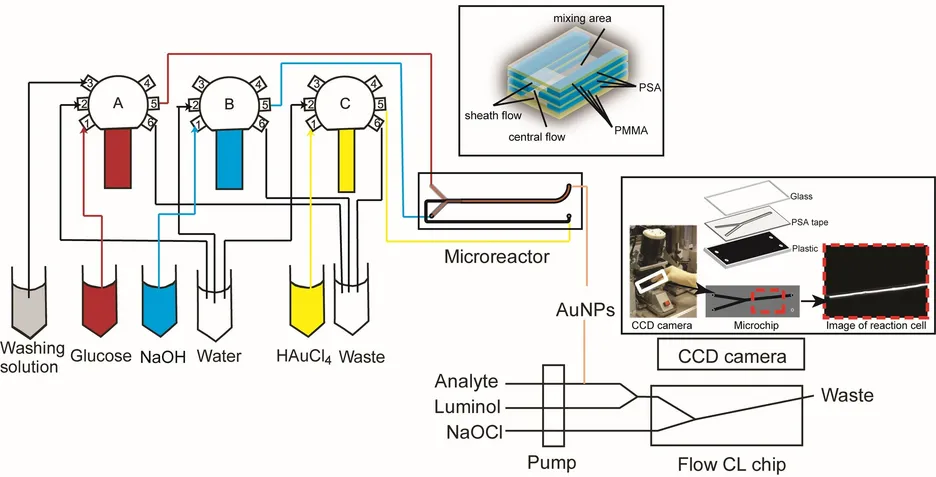Synthesis of gold nanoparticles in a 3D hydrodynamic focused microreactor and their application for online chemiluminescence detection
OBJECTIVE
Microfluidic reactors were shown to synthesize AuNPs with narrower size distributions and faster reaction rates compared to conventional batch synthesis. Significant fouling of the micro-channels was observed due to deposition of nanoparticles on the reactor walls. A 3D microreactor can solve this problem. However, fabrication of 3D microfluidic devices is normally quite expensive and tedious. AuNPs have drawn big attention in CL system for biosensing application. The catalytic activity of AuNPs depends on size, shape, and surface charge property.It is difficult to confirm the optimal condition of AuNPs for a certain CL system. The objectives of our institute are:
- Fabricate 3D microreactor for synthesis of AuNPs without fouling.
- Change the synthesis parameter to get AuNPs with different properties
- Couple CL system with online synthesis for characterization
METHODS
- A novel method was established to rapidly and effectively produce 3D hydrodynamic focusing microreactors which are made of two layers of poly(methyl methacrylate) (PMMA) sheets and three layers of double-sided pressure sensitive adhesive (PSA) tape. The channel structures were cut in each layer by cutting plotter before assembly. The microfluidic chip was manually assembled by a simple lamination process. The accuracy of the alignment was achieved by using an alignment tool. The fouling of gold nanoparticles was prevented by means of a sheath flow.
- The property of AuNPs was easily controlled by tuning concentration or flow rate of reagents during synthesis.
- The synthesized AuNPs were used as catalysts for the luminol-NaOCl CL system. The synthesis was coupled directly with a CCD camera for recording CL signals. All operations were performed in an automatic way.

INVOLVED PHD STUDENTS
M. Sc. Yanwei Wang
PARTNERS
FINANCIAL SUPPORT
China Scholarship Council